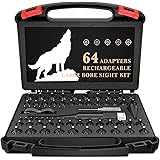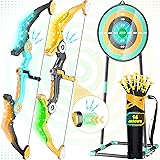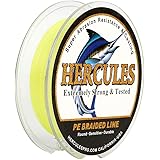In the realm of survival and bushcraft, the tools we choose can be the difference between thriving and simply surviving—or worse. The video above delivers a potent warning, cautioning against the allure of the “fancy-tactical-survival shovel” and its potentially fatal flaws. While many of these multi-functional tools flood online marketplaces, often celebrated as “Amazon best sellers” and priced upwards of $100, their sophisticated appearance often belies a fundamental lack of durability and reliability in the field. As seasoned outdoor enthusiasts and preppers understand, when gear fails in a critical situation, the consequences can be dire. It’s a sobering reminder that innovation doesn’t always equate to utility, especially when life and limb are on the line.
The Multi-Tool Shovel Fallacy: When More Means Less
The concept of a multi-tool is undeniably appealing: a single item designed to perform several functions, reducing pack weight and perceived complexity. However, this appeal often masks inherent design compromises, particularly evident in the category of survival shovels. These “tactical” shovels often integrate features like saw blades, fire starters, axes, picks, bottle openers, and even compasses into a single, often collapsible, unit. While marketed for their versatility, engineering principles dictate that adding more moving parts and specialized features inherently introduces multiple points of failure.
Consider the typical construction of these shovels. They often employ various materials—steel for the blade, aluminum for the handle, rubber for grips—joined by screws, pins, and locking mechanisms. Each joint, each pivot, and each material transition represents a potential weakness. Under the stress of digging through compacted soil, prying roots, or chopping small branches, these components are subjected to significant torsional and sheer forces. Unlike a monolithic, single-purpose tool, the complex articulation of a multi-tool shovel is simply not designed for sustained, heavy-duty work. Field reports and anecdotal evidence from experienced bushcrafters consistently highlight issues such as:
- Handle Snaps: The weakest point often resides where the blade meets the handle, or within the collapsible segments of the handle itself. Thin-walled aluminum tubing, common in lightweight designs, can easily bend or fracture under moderate leverage.
- Locking Mechanism Failure: The mechanisms designed to secure the shovel head in various positions (e.g., as a hoe or pick) or to lock handle extensions often fail, either jamming or becoming loose, rendering the tool ineffective or dangerous to use.
- Component Breakage: Integrated accessories like fire starters can dislodge, saw teeth can snap, or compasses can malfunction due to shock. While these individual failures might seem minor, they undermine the very premise of a multi-functional item.
- Poor Ergonomics: The drive for compactness and multi-functionality often sacrifices ergonomic design, leading to awkward angles, uncomfortable grips, and inefficient force transfer, increasing user fatigue and decreasing effectiveness.
The marketing prowess behind these “best sellers” frequently capitalizes on a consumer’s desire for an all-in-one solution without adequately emphasizing the trade-offs in durability and performance. A tool that fails “after a short time of usage” is not merely an inconvenience in a survival scenario; it is a critical vulnerability.
The Undeniable Value of Robust, Single-Purpose Tools
The video’s recommendation to “only trust in simple traditional shovels” resonates deeply with the core tenets of survival philosophy: reliability, durability, and proven performance. Traditional, single-purpose shovels, whether a sturdy entrenching tool (E-tool) or a compact garden spade, are designed with a singular focus on their primary function. This dedication to purpose allows for optimized material selection, structural integrity, and ergonomic design without the compromises inherent in multi-tools.
A well-made, simple survival shovel offers several key advantages:
- Superior Material Integrity: Typically constructed from high-carbon steel for the blade and often a solid hardwood or thick-gauge steel for the handle, these tools possess high tensile strength and impact resistance. The fewer joints and welds, the less potential for structural failure.
- Enhanced Durability: Without complex locking mechanisms or interchangeable parts, there materials are chosen for their resilience against bending, breaking, and corrosion. They can withstand significantly more abuse and last for years, even with heavy use.
- Predictable Performance: A simple shovel performs its core task—digging—exceptionally well. Its design is optimized for efficient earth-moving, root cutting, and trenching, without the awkwardness of trying to adapt a multi-tool.
- Easier Maintenance: Less complexity means fewer parts to clean, repair, or lose. A simple shovel can often be field-repaired or maintained with minimal effort.
- Cost-Effectiveness: While some high-quality traditional tools can be an investment, many robust, single-purpose shovels are significantly less expensive than their “tactical” counterparts, offering superior value for money in terms of longevity and reliability.
This isn’t to say that all multi-tools are inherently bad. Many reputable brands produce excellent multi-pliers or compact knife-and-tool combinations that excel within their design parameters. However, the shovel, being a tool subjected to significant mechanical stress and leverage, is particularly susceptible to the “jack-of-all-trades, master-of-none” pitfall when overloaded with functions.
Choosing Your Survival Shovel Wisely
When selecting a survival shovel, prioritize function, durability, and material science over flashy features. Here are critical considerations for an expert-level gear assessment:
- Material Composition: Look for blades made from hardened carbon steel or manganese steel for superior strength and edge retention. Handles should be robust; solid wood, fiberglass-reinforced nylon, or thick-gauge steel are preferred over thin aluminum tubing.
- Construction Integrity: A shovel with a solid, one-piece construction where the blade extends into the handle (full-tang design for smaller shovels) offers maximum strength. For folding E-tools, examine the pivot points and locking mechanisms closely, opting for robust, positive locking designs.
- Ergonomics and Balance: While often overlooked, a shovel’s balance and handle design significantly impact its efficiency and user fatigue. A well-balanced tool reduces strain and allows for more effective force application.
- Weight vs. Strength: Understand the trade-off. While lightweight is desirable for packing, it should not come at the expense of strength. A slightly heavier, yet unbreakable, tool is always preferable in a critical situation.
- Reputation and Field-Testing: Research brands known for producing durable, reliable outdoor and military-grade equipment. Seek out reviews from experienced users who have put the tools through rigorous field conditions, rather than relying solely on popularity metrics like “best seller” lists.
Beyond the simple shovel, other single-purpose digging tools like trowels, entrenching tools (specifically military-issue ones often excel in this category), or even a small, sturdy spade, offer better performance and reliability than complex tactical shovel contraptions. They exemplify the principle that in survival, simplicity often reigns supreme.
Disarming the Danger: Your Q&A on the Killer Survival Tool
What type of survival shovel should I be careful about?
You should be wary of ‘fancy-tactical-survival shovels’ that promise many functions in one tool, as they often break when you need them most.
Why are multi-tool shovels often unreliable for survival?
These shovels typically have many moving parts, different materials, and complex locking mechanisms, which create multiple points of failure under stress.
What kind of shovel is recommended for survival instead?
The article recommends simple, traditional, single-purpose shovels, such as sturdy entrenching tools or compact garden spades.
What makes traditional shovels a better choice for survival?
Traditional shovels are designed with superior materials and structural integrity for their main function, making them more durable and reliable for heavy-duty tasks.











